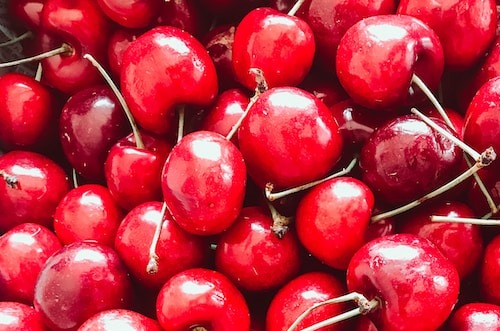
In W24 in the cherry landscape, Italy faced significant challenges in its cherry production due to heavy rains, particularly in southern Italy, resulting in extensive damage to the cherries in the countryside. As a consequence, the quality of the Italian cherries has been negatively affected, leading to a decline in prices. On the other hand, Spanish cherries continue to maintain high price levels, as they are more readily available and of better quality compared to the Italian production. The demand for cherries has remained stable, although it has been discouraged by the combination of high prices and sub-optimal quality. In the German market, Spanish cherries were prominently featured, providing a foundation for the available range. However, there was a noticeable increase in the importance of Turkish cherries, specifically the Napoleon and Sahili varieties, which became more readily available. Greece contributed to the market with the Pella variety. Italy, on the other hand, supplied the Ferrovia cherries, which were highly regarded for their taste and firmness. These diverse sources of cherries provided German consumers with a variety of options to choose from.
The 2023 cherry season commenced in Moldova, and despite some regions experiencing poor pollination of mid to late varieties, the overall harvest appears promising. Moldavian producers are prepared to offer a wide range of cherry varieties, including Nimba, Red Pacific, Rocket, Frisco, Carina, Kordia, Big Star, Ferrovia, Regina, and Gray Star. Cherry production in Moldova continues to grow, with annual investments in new varieties and innovative post-harvest technologies to ensure exceptional fruit quality that meets international standards. Moldavian cherries are renowned for their unique sweetness and natural taste, owing to the fertile soils and distinctive climatic zone of the region. Currently, Moldova produces approximately 15 thousand mt of cherries per year, with availability from late May to the first half of July. As one of the top 15 global exporters of cherries, Moldova is increasingly becoming an attractive source of high-quality cherries. Its proximity to key EU markets allows for transportation within 2-5 days, and the country benefits from a preferential import tax rate of 0% to EU markets, further enhancing its appeal.
Chile's cherry exports have been experiencing significant growth, with a 16.5% increase during the 2022 season, reaching a total of 415.32 thousand mt. This success has led to considerations of further expansion by cultivating additional cherry varieties. Representatives from ANA Chile recently visited Spain to study the cherry varieties cultivated in the country. The objective was to introduce these varieties to Chile, as the weather conditions are similar and conducive to successful cultivation. One of the main advantages highlighted is the greater temperature difference between day and night in Chile, along with cooler mornings and lower environmental humidity, resulting in improved cherry quality compared to what has been observed in Spain. Currently, ANA Chile is conducting tests with two Spanish cherry varieties, Nimba and Pacific Red, and initial data suggests that the cherries would experience a 20% improvement in quality when grown in Chile. This exploration of new varieties aims to further enhance Chile's position as a leading exporter of high-quality cherries.
The cherry harvest commenced in the Çeribaşı village of the Edirne's Enez district in Turkey, with cherries having high quality and long shelf life. These cherries are exported to five European countries, including Germany, England, and France. In 2023 so far, the cherry yields and prices have been favorable, meeting market expectations. In the region, an average yield of 350-400mt is obtained from cherry trees planted on 500 decares of land. The Çeribaşı cherry is gaining recognition as it is exported to several European countries, becoming an important brand in the market. Lastly, the cherry harvest for export also commenced in the Bahçe and Hasanbeyli districts of the Osmaniye province in Turkey. The cherries, cultivated across a total area of 1,142 decares, are primarily grown in the village of Yukarıkardere in the Bahçe district. In total, cherry production covers an area of 3,142 decares in the district. It is estimated that around 250mt of cherries will be exported in 2023 by four export companies based in Yukarıkardere village. The prices for exported cherries are expected to range between USD 1.24-1.86/kg, with shipments mainly destined for the EU markets, and Russia. The exported cherries are carefully selected, with a caliber of 26 and above meeting the quality standards for international trade.





